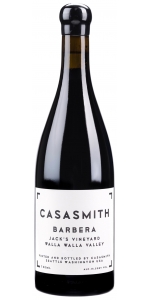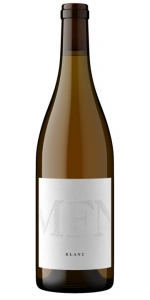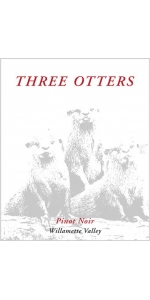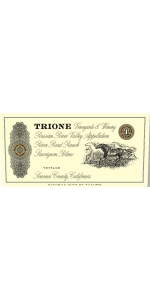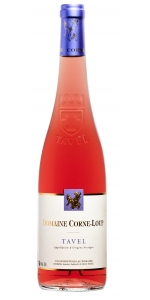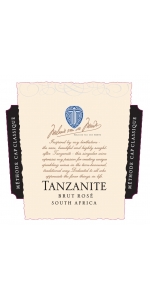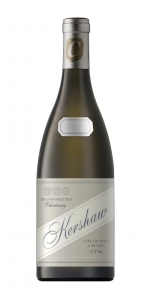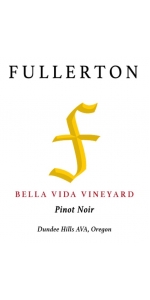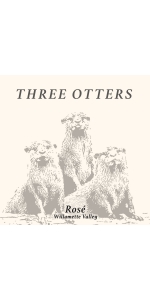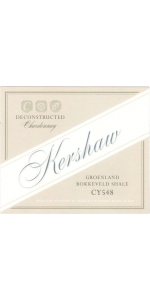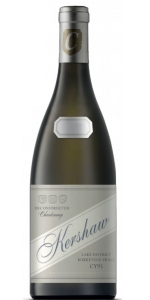Fullerton Five Faces Chardonnay 2017
12 bottles with free shipping for: $420.00
| BUY MORE! SAVE MORE! | ||||||||||||||||
|
| Country: | United States |
| Regions: | Oregon Oregon (Willamette) |
| Winery: | Fullerton Wines |
| Grape Type: | Chardonnay |
| Organic: | Yes |
| Vintage: | 2017 |
| Bottle Size: | 750 ml |
Fullerton Five Faces Chardonnay is made from 100 percent Chardonnay.
Five FACES is an acronym for the Fullerton family – Filip, Alex, Caroline, Eric, and Susanne. The wines blend fruit from multiple vineyards in Willamette Valley, mainly in the north of the valley with one to the west in the Van Duzer Corridor. A full representation of the Willamee Valley’s soil types is on display with one volcanic vineyard, two loess (windblown) vineyards, and two sedimentary vineyards. The vineyards range in elevation from 550-700 feet.
Honeydew melon, japanese pear, apricot, honeysuckle, apple-blossom, nutmeg, brioche, and lemon curd. Melon is echoed on the palate with notes of lemon, tangerine, toasted almonds, and fennel. Lovely and integrated acidity balances the palate weight from 17 months on the lees.
17 months in 10% new French Oak
Paris with creamy dishes and cheeses. Chicken and Turkey.
Great wine speaks profoundly, a universal language transcending any one culture. Hailing from northern Europe, the Fullerton family speaks many languages, and delights in sharing the language of wine with others. Fullerton Wines crafts elegant and distinctive Pinot Noirs and Chardonnays that transport you to their place, Oregon’s Willamette Valley.
A family of enophiles, the Fullertons can trace their love of wine to Eric, who was first introduced to wine growing and production during his teenage years when he worked as a cellar hand in Germany (a story in and of itself). A few years later, his best friend in Denmark inherited an impressive cellar of Bordeaux and Burgundy wines. Together, they sought younger bottlings of the cellared wines, and held vertical tastings. Their interest in wine grew, and they began traveling throughout France discovering new producers to fuel their expanding passion.
When Eric and Susanne met in Stockholm, it did not take long for Susanne to fall in love with Eric and the wines he respected. Marriage soon followed, and they continued tasting, savoring, and cellaring wine.
In 2010, Alex Fullerton graduated from the University of Oregon with an Economics degree. Alex and Eric were tasting wine at Penner-Ash Wine Cellars, and began discussing home-brewing and the process of fermentation. The conversation led to the idea of Alex making wine. A couple of minutes later, Lynn Penner-Ash entered the room, and Eric asked her how Alex could enter the industry. Coincidentally, a harvest intern had dropped out that morning, and she needed a replacement. The next day Alex was offered a job as an intern, and later became a cellar hand at Penner-Ash. His passion ignited.
Alex next took off to New Zealand to work at Drylands Winery in Marlborough. Although the experience didn’t align with the handcrafted winemaking tradition in Oregon, he came back determined to learn more about growing and production. Penner-Ash welcomed him back again for the 2011 harvest, and he worked the following 2012 harvest at Bergström Wines under winemaker Josh Bergström. Lynn Penner-Ash and Josh Bergström both mentored and inspired Alex, deepening his knowledge of winemaking.
Fullerton Wines began in a garage in 2011. Alex and Eric partnered with their good friend Roger Wallberg and made a few barrels of Pinot Noir. Despite the challenging vintage, the wine impressed and Fullerton Wines was born. Today, Fullerton Wines crafts treasured Willamette Valley wines, focused purely on the Burgundian varietals of Pinot Noir and Chardonnay.
Pinot Noir: 8,150 cases, Chardonnay: 2,000 cases, Pinot Gris: 1,000 cases and Syrah:150 cases
Alex Fullerton worked at Penner-Ash and Bergstrom in Willamette Valley, Oregon and Drylands in Blenheim, NZ majored in Economy @ UO, Studied Organic chemistry @ PSU and Viticulture & Enology @ OSU.
Vineyards: Ivy Slope (Estate) Chard, Croft PN, Fir Crest PN, Arbor Brook PN, Lichtenwalter PN, Bjornson PN, Momtazi PN, Ch Bianca Chard, Bella Vida PN, Apolloni PN, Bennett PN, La Velle PG, May's Vineyard Syrah.
Ivy Slope (Estate) 0.5 Acres All others by Acerage contracts.
Age of the vines: 7 - 50 years.
Everything is at a minimum Sustainable, Momtazi is Biodynamic and Croft is Organically certified.
Our holistic viticulture produces energetic fruit, great wine, and a healthier world.
Great wine requires great fruit. Growing high-quality grapes demands that we care for the soil in which the vines grow. Grapes, more than any other crop, convey the characteristics and health of their site. It is widely known that the best wines come from grapes grown in well-drained soils. Grape growers and winemakers are becoming increasingly aware of the devastating effects of synthetic fertilizers and herbicides on the structure, drainage, infiltration, and overall health of the soil. At Fullerton Wines, our pursuit of great wine guides us to organic and biodynamic farming methods because of its ability to build up healthy soils while also sequestering carbon into the soil (thereby helping to mitigate climate change). Through these methods, we improve the aggregate stability, drainage, water-holding capacity, and infiltration of the soils. We also reduce erosion and nutrient leaching.
Lush, dare I say creamy in texture? Black currant, rich, earth, cured meat, cold ash. Dark, delicious, earth bound wine. One of the best “the Rocks” has to offer.
Review:
A great expression of this variety, the 2017 Barbera Jack's Vineyard has a ripe yet savory nose of mulled red and black fruits, dried herbs, flowers, and new leather. Medium-bodied on the palate, with light, polished tannins and beautiful balance, it's another ethereal, elegant version of this cuvée to enjoy over the coming 7-8 years.
-Jeb Dunnuck 92 Points
A deep and rich hue of golden straw gives the first clue that this is a serious Chardonnay. Aromas of pear, green apple, and lime peel jump out of the glass followed by more nuanced fragrances of orange blossom, ginger root, and brioche. The sensation on the palate casually demonstrates both broad depth and laser like focus. An assertive core of acid and saline minerality rests completely ensconced in rich flavors of pie crust, clotted cream, and burnt caramel. Drink now for fresh vibrance, or in ten years for wild complexity. This wine is a perfect white to be enjoyed year-round.
Review:
The 2021 MFN Blanc Chardonnay is very ripe in style with scents of banana chip, apple pie, jasmine, allspice and brown sugar. The full-bodied palate is packed with ripe, spicy fruits and plenty of refreshing acidity, and it finishes long with a satiny, mouth-coating texture. It's an old-school style reminiscent of Napa that fans of ripe, oaked Chardonnays will enjoy.
-Robert Parker 97 Points
Fullerton Three Otters Pinot Noir is made from 100% Pinot Noir - 7-40 years old
This Willamette Valley blend hails mainly from three different vineyards in the north, east, and south of the Willamette Valley, with a smaering from five of Fullerton's other sites. The soils of the vineyards represent the breadth and diversity of the Willamee Valley with both sedimentary- and volcanic-based soils.
Blueberry and ripe strawberry with a dash of baker’s spice, bramble, and herbs. The palate carries the fruit forward elegantly with balanced tannins following. Intriguing complexity and depth—an impressive wine for all.
This wine comes from 100% destemmed rotator barrels fermented at ambient temperature reaching a peak temperature of 73° F. The rotator barrel spun twice daily during fermentation yielding a gentle extraction. After fermentation, the wine went through a three-week extended maceration, allowing the tannins to polymerize, soffening the wine. Aged for 12 months in French oak barrels and three months in tank, the wine was then bottled after filtration.
This wine is handled very gently in the cellar allowing the nuances of the delicate fruit to be preserved and the wine to be very approachable in its youth. We have a preference for pump-overs versus punch-downs for its smoother extraction and softening effect on the tannin. To retain freshness and verve we age most of the wine in tank. However, we softened up and rounded out about 25% of the blend in barrel. The result is a fresh, fruit forward, yet earthy and intriguing, Pinot Noir.
River Road Ranch is a 115-acre jewel in the heart of the Russian River Valley AVA. Chardonnay vines thrive in well-drained soils, shrouded with fog cooled nights, ideal growing conditions. The grapes for this wine came from two blocks of twelve and fifteen-year-old vines, planted with clones #4, 95, and 2A-Wente.
Bottled poetry is the description of Trione Chardonnay. Burgundian in style of both nose and palate. Rich and inviting, this wine offers a complex mix of toasty baguette, warm melted brie; silky but with the structure demonstrating the aging potential. The wine is tasting great now but will be awesome for the next 5-7 years.
Corne Loup Tavel Rose is made from 60% Grenache, 15% Cinsault, 10% Syrah, 15% mix of Mourvèdre, Clairette & Carignan
Elegant, refreshing, food-friendly and versatile, this Tavel offers mouth-watering aromas of strawberry and berry pie.
Corne Loup Tavel represents the pinnacle of the rose pyramid quality wise that can be achieved in the Southern Rhone. The town of Tavel has been famous for its rose wine since the time of the Popes in Avignon (1300's). Tavel is about 2,300 acres in size and produces about 500,000 cases yearly of 9 liter cases, plus can age for 2-3 years, unlike many other roses. Produced from a blend of Grenache, Cinsualt, Syrah, Mourvedre, Cinsault and Carignan, the wine comes from a famous sub-parcel called the Plateau de Vallongue between Tavel and Lirac AOC's.
The 20 hectare-vineyards are located in the hamlets of Oliver, Campet, Vestides and Vallongue. The Tavel from this producer is a blend of all 3 soils types you can find in the AOC:
- Vestides is located West of the village of Tavel. The terroir is made of flat white stones.
- Vallongue is located Northeast of the Village of Tavel. The terroir is similar to Chateauneuf du Pape, with a lot of pebble stones. (Galets Roules).
- Olivet is located South-East of the village of Tavel. The terroir is made of sandy soils and some stones.
Dry and lively, it is an ideal wine for barbecues as it makes a wonderful sipper that's also capable of matching with a wide variety of summer foods, including grilled chicken, seafood and summer salads
Review:
"Almost garnet-hued in the glass, this plum-scented, Grenache-dominant blend offers all the blackberry and blueberry richness of a red wine with the freshness and thirst-quenching quaffability of a rosé. Accented by spikes of burnt caramel, granite and smoke, it's an elegant, satisfying and dry wine that drinks well anytime of the year. - ANNA LEE C. IIJIMA"
- Wine Enthusiast (September 2021), 91 pts
Tanzanite Brut Rose Method Cap Classique is made from 60% Pinot Noir and 40% Chardonnay.
It begins with a sumptuous and luminous pink appearance. Followed by a delicacy of red fruit aromas. The nose is generous and elegant. Fresh attack followed by a harmonious sensation on the palate. Perfectly balanced in the best Tanzanite Style which combines elegance and flair.
Yearly the grapes are sourced from Robertson. Hand picking of the grapes we do in small 18kg lots and then whole bunch pressing on every 5 Ton of grapes. Yields are around 450-480 liters per ton of grapes. Juice was inoculated with Prise de Mousse yeast for primary fermentation at cool temperatures for 8-10 days. This is followed by Malolactic fermentation on all base wines. The MLF ads depth and complexity to the base wines. With maturation the wine will get soft, creamy and elegant. Secondary fermentation took place in the bottle and wines were left on the lees and tasted every few months to monitor the ageing on the lees. Minimum time spent on the lees 24 months.
It’s the only area in the Western Cape where you will find Chalk in our soil.
The wine is made from selected vineyards. Limited to 6 000 bottles annually.
Age of the vines is around 10-15 years old.
Pairs well with roasted white meat, game, tapas, ham and smoked salmon.
Review:
"Pale pink. Ripe red berries accented by Cointreau show on the nose of this very dry and crisply textured sparkling rosé. It’s mineral and subtly fruit flavored palate is superbly fresh and alluring despite an astringent touch on the finish. It’s a great sparkler for food. A 60/40 blend of Pinot Noir and Chardonnay from 10-15 year old vines in the Robertson area."
- International Wine Review (Champagnes & Sparkling Wines for the Holidays: The Best of 2018), 91 pts
Kershaw Chardonnay Deconstructed Lake District Cartref CY96 is made from 100 percent Chardonnay.
Sourced from the western part of Elgin, known as the Lake District, this clone produces wines that are nervous, aromatic, elegant and sharp with slightly lower alcohol and finely balanced, the fruit profile being subtle with hints of citrus/orange peel and peach blossom and with time, some nutty elements. The Cartref soils, a mixture of decomposed granite, pebbles and quartz, adds delicacy and heightens the fruit intensity.
The inspiration for my Deconstructed Chardonnay stems from my belief that the Elgin region boasts credentials that make it world-class. To bolster these regional credentials, I have set out to prove that Elgin has both a signature grape, as well as specific ‘terroirs’ (meso-climates) that reflect intra-regional distinctions. To fully comprehend this, it is necessary to dig deeper into the DNA that make up our region. To elucidate this, I have decided to make these 3 Chardonnay wines, each selected from a specific vineyard and an individual clone. Importantly, this is an ongoing story that will unfold over the coming years.
Vintage notes:
Whilst 2017 experienced a cool winter to enable good vine dormancy, the rainfall was low and followed similar conditions felt in 2015 and 2016. Budbreak took place in ideal warm sunny conditions whilst flowering was a touch earlier than normal; strong blustery winds meant pollination took longer to complete. As a result, berry set was uneven leading to some smaller berries that despite a lower yield did have good concentration of flavours. Despite expecting an
early harvest an unusually cool December slowed down ripening whilst some January rain during veraison helped nourish the soils and more importantly, helped the vine focus on grape ripening rather than foliage & root growth. Harvest took place under blue skies in
mid-March. The net result of the drier year is that the grapes had decent natural acidity, achieved steady phenolic ripeness and plenty of intense fruit flavors.
Winemaking:
Grapes were hand-picked in the early autumnal mornings, placed into small lug baskets and tipped directly into a press before being gently whole-bunch pressed up to a maximum of 0.6 bar or until a low juice recovery of 580 litres per ton was obtained. The juice gravity-flowed directly to barrel (no pumps were used at all) without settling. The unclarified juice had no enzymes or yeast added to it and therefore underwent spontaneous fermentation until dry, with malolactic discouraged. The wine rested in barrel for 4 months prior to judicious sulphuring and a further 7 months’ maturation in barrel before racking and bottling.
Review:
"A single clone (96) grown on a single parcel from a single vineyard of Cartref soils (decomposed granite and quartz). Roasted grain, wet stones, and lemon peel aromas. Precise and tightly coiled with an intense mineral character and yellow fruit and citrus zest flavors finishing with a smoky gunflint note. Matured in 50% new oak."
- International Wine Review (Richard Kershaw Lifts Elgin To New Heights, February 2019), 93 pts
Fullerton Three Otters Pinot Noir is made from 100% Pinot Noir - 40 years old
11 months in 25% new Oak and 75% neutral
Bella Vida Vineyard is perched high in the heart of the Dundee Hills. This picturesque site provides elegant fruit from the storied Jory soils of the AVA. LIVE certified.
Aromas of cherry and raspberry flow into finely-tuned layers of cedar, cocoa, licorice, and baking spices. The palate pulses with energy as the silky tannins and gorgeous mid-palate captivate your senses. A radiant and profound experience.
A co-fermentation of Dijon clones 113, 667, and 777, this wine expresses the volcanic soils of the Dundee Hills elegantly, yet powerfully. Upon arrival, the grapes were immediately de-stemmed into an open-top two-ton fermenter. Following a seven day cold soak, the wine started fermenting slowly at a cool temperature. To manage extraction, we utilized one to two punch-downs and one pump-over per day, with two rack-and-returns at the beginning and middle of fermentation. As fermentation neared the end, the must was heated to achieve a peak temperature of 94° F resulting in optimum extraction, and then we immediately chilled the wine to extend the time on the skins, while switching to one pump-over per day to limit harsh, seed-tannin extraction. After a total of 19 days on the skins, we drained and pressed the wine, keeping the free-run and press fractions separate. This bottling contains only the free run fraction. Following two days of settling, the wine was racked to barrel and aged for 11 months in 25% new French oak and one month in tank prior to being bottled unfined and unfiltered.
Review:
Vivid red. Displays fresh red/dark berry and pungent floral aromas, along with suggestions of cola, mocha and five-spice powder. Appealingly sweet and energetic on the palate, offering intense black raspberry, cherry-cola, spicecake and rose pastille flavors that tighten up slowly on the back half. Fine-grained tannins frame the well-defined finish, which lingers with impressive, red fruit liqueur-driven persistence. (all de-stemmed fruit and 25% new French oak). - Josh Raynolds" - Antonio Galloni's Vinous (June 2019), 93 pts
Fullerton Three Otters Pinot Noir is made from 100% Pinot Noir - 7-40 years old
This Willamette Valley blend hails mainly from three different vineyards in the north, east, and south of the Willamette Valley, with a smaering from five of Fullerton's other sites. The soils of the vineyards represent the breadth and diversity of the Willamee Valley with both sedimentary- and volcanic-based soils.
Blueberry and ripe strawberry with a dash of baker’s spice, bramble, and herbs. The palate carries the fruit forward elegantly with balanced tannins following. Intriguing complexity and depth—an impressive wine for all.
This wine comes from 100% destemmed rotator barrels fermented at ambient temperature reaching a peak temperature of 73° F. The rotator barrel spun twice daily during fermentation yielding a gentle extraction. After fermentation, the wine went through a three-week extended maceration, allowing the tannins to polymerize, soffening the wine. Aged for 12 months in French oak barrels and three months in tank, the wine was then bottled after filtration.
This wine is handled very gently in the cellar allowing the nuances of the delicate fruit to be preserved and the wine to be very approachable in its youth. We have a preference for pump-overs versus punch-downs for its smoother extraction and softening effect on the tannin. To retain freshness and verve we age most of the wine in tank. However, we softened up and rounded out about 25% of the blend in barrel. The result is a fresh, fruit forward, yet earthy and intriguing, Pinot Noir.
Fullerton Three Otters Rose is made from 60% Pinot Noir, 40% Pinot Gris (7-50 years old)
This Willamee Valley blend hails mainly from three different vineyards in the north, east, and south of the Willamee Valley, with a smaering from five of our other sites. The soils of the vineyards represent the breadth and diversity of the Willamee Valley with both sedimentary- and volcanic-based soils.A nose of fresh strawberries, watermelon rind, and lemon blossom with the palate echoing these flavors along with green apple and lemon. Cool climate vibrancy melds with lovely texture. Great tension and energy.
Acid: TA 5.6 g/L
pH: 3.45
Aging: 100% stainless steel
Bottled Unfined
Clones: Pommard, Wadensville, Dijon 113, 114, 115, 667, and 777
The story of Fullerton’s rosé originates from the 2012 harvest. Winemaker Alex Fullerton and his father and proprietor Eric Fullerton couldn’t decide on a house style for rosé, so they held a friendly competition. They each made a rosé to see whose would win over a crowd. Though the wines were destined to be boled separately, Alex got curious and tried blending the two. Voila! The sum was better than the parts, and a tradition was born. Alex now makes one rosé that is whole cluster pressed and tank fermented, yielding a very crisp and light colored wine, while Eric crafts his rosé from a more robust extraction, which yields a darker and fuller-bodied wine. The two lots are then blended to taste, delivering a crisp, fresh rosé with wonderful structure. The juice spent three weeks on the gross lees prior to fermentation to extract aroma precursers, and then six months on lees post-fermentation.
Pairs with soft cheeses, chicken/turkey.
Kershaw Chardonnay Deconstructed Groenland Shale CY548 is made from 100 percent Chardonnay.
The inspiration for this Chardonnay stems from my belief that the Elgin region has both a signature grape as well as particular terroirs within its demarcated boundary that reflect regional credentials. This Chardonnay was selected from a sub-region of Elgin from a specific vineyard and an individual clone (CY548).
Tasting Notes:
Sourced from the foothills of the Groenland Mountain in Northern Elgin this clone has been taken from Corton Charlemagne cuttings. It produces wines that have aromatics oscillating between lemon blossom, white flowers, petrichor and struck stone. Full in body they exude concentration with white stone fruit yet reinforced with an austere texture and robustness that makes for excellent aging potential. The Bokkeveld Shales adds structure and concentration to the flavor.
Vineyards:
Sourced from the foothills of the Groenland Mountain in Northern Elgin this clone has been taken from Corton Charlemagne cuttings.
Winemaking:
Grapes were hand-picked in the early autumnal mornings, placed into small lug baskets and tipped directly into a press before being gently whole-bunch pressed up to a maximum of 0.6 bar or until a low juice recovery of 580 liters per ton was obtained. The juice gravity-flowed directly to barrel (no pumps were used at all) without settling. The unclarified juice had no enzymes or yeast added to it and therefore underwent spontaneous fermentation until dry, with malolactic discouraged. The wine rested in barrel for 4 months prior to judicious sulfuring and a further 7 months’ maturation in barrel before racking and bottling.
Barrel: Selection: A small number of artisanal coopers are selected from mostly Burgundy, with only French oak was chosen. Up to 40% of the oak is new with the remainder split into 2nd and 3rd fill barrels of predominantly 228 litres.
Look at pairing this with textured fish, straightforward chicken dishes, pan-fried or grilled pork dishes, soft-rind cheeses, cream or creamy dishes be it with pasta or the aforementioned fish, chicken or pork, to allow the complexity of the wine to shine through. If using mustard, preferably use Dijon mustard as it uses verjus (soured grape juice) and not vinegar. Also look to delicate herbs (tarragon, dill, basil, parsley) rather than hard stalked herbs (rosemary, thyme, oregano, etc). Avoid smoked meats or fish as well as highly spiced dishes as this can overwhelm the wine and clash with the oak. I would try oysters; Lobster grilled or boiled but not thermidor as it is too rich; turbot, dover sole, sea bass, yellowtail with a shellfish sauce; fish pie; roasted free-range chicken with tarragon; roast loin of pork with garlic and ginger; truffle risotto; pasta in a clam sauce; slice of brie de meaux.
Review:
"Perfume of flowers, minerals and citrus zest. The palate is dense and focused, almost chewy with an opulent mandarin mid palate and long, savory finish. Matured in 50% new oak that is seamlessly integrated with the wine."
- International Wine Review (Richard Kershaw Lifts Elgin To New Heights, February 2019), 94 pts
Kershaw Chardonnay Deconstructed Lake District Bokkeveld Shale CY95 is made from 100 percent Chardonnay.
The inspiration for this Chardonnay stems from my belief that the Elgin region has both a signature grape as well as particular terroirs within its demarcated boundary that reflect regional credentials. This Chardonnay was selected from a sub-region of Elgin from a specific vineyard and an individual clone.
Tasting Notes: Sourced from a parcel in the Western part of Elgin the 95 clone is known for its excellent quality creating wines that are aromatic, fuller bodied and rich yet tightly structured, well–balanced with length of flavor, managing to show restraint and mouth-watering passivity with a great line through the palate and fruit veering towards white peach flesh and nectarine. On Bokkeveld Shales it brings amplified perfume on the nose and persistence and elegance to the palate.
Winemaking:
Grapes were hand-picked in the early autumnal mornings, placed into small lug baskets and tipped directly into a press before being gently whole-bunch pressed up to a maximum of 0.6 bar or until a low juice recovery of 580 liters per ton was obtained. The juice gravity-flowed directly to barrel (no pumps were used at all) without settling. The unclarified juice had no enzymes or yeast added to it and therefore underwent spontaneous fermentation until dry, with malolactic discouraged. The wine rested in barrel for 4 months prior to judicious sulfuring and a further 7 months’ maturation in barrel before racking and bottling.
Review:
"Minerals and a hint of flint on the nose. The expressive minerality of this wine also shows on the palate with complementary light stone fruit notes. Aged in 50% new 228L oak aging for 11 months."
- International Wine Review (Richard Kershaw Lifts Elgin To New Heights, February 2019), 95 pts
- back
K Vitners The Hidden Syrah is made from 100 percent Syrah.
It is not a secret the magnitude this wine can reach. In this vintage, femininity reigns supreme. Perfume, flowers, cassis. All anchored to sense of place with stone, ancient soil and chanterelles that make this wine a wine of the earth.
Review:
Kirsch, ripe black cherries, roasted herbs, violets, and orange blossom notes all emerge from the 2018 The Hidden Syrah Northridge Vineyard, which is all Syrah brought up in neutral oak. Rich, full-bodied, and beautifully polished, it packs loads of fruit yet stays light on its feet, with no sensation of heaviness. As with all of these Syrahs from Smith, it's going to benefit from 2-4 years of bottle age.
-Jeb Dunnuck 96 Points
Marques de Casa Concha Heritage is made from 84% Cabernet Sauvignon, 12% Cabernet Franc, & 4% Petit Verdot.
Deep, dark red in color with lush flavors of cherries, blackcurrants, blackberries, cedar, and a bit of black tar. It shows a tremendous concentration of flavors and a smooth, almost silky texture framed by a firm tannic structure that truly stands out at the beginning of the long finish.
This wine pairs beautifully with grilled, roasted, or braised red meats and game in sauces that have a bit of acidity, with tomato or wine or with herbs such as rosemary, thyme, and bay leaf. A perfect wine for most cheeses.
100% estate grown red blend from renowned Puente Alto terroir. Chile’s most acclaimed DO. Upon arriving at the winery, the grapes are destemmed and crushed for fermentation, which takes place in closed stainless steel tanks with daily pump overs throughout the entire 10-day process. The new wine remains in contact with its skins for approximately 10 days, when it is devatted and malolactic fermentation is allowed to take place naturally.
The wine then underwent 16 months in French oak barrels, 40% first use, 60% second use.
El Mariscal vineyard is 600 meters above sea level and is made up of 52.95 hectares, of which 46.23 correspond to Cabernet Sauvignon, 4.52 to Cabernet Franc and 2.20 to Petit Verdot; and it has a density of 5,500 plants/ha, vines that come from mass selection and are mostly on loam. Meanwhile, Don Melchor vineyard is 650 meters above sea level and is made up of 125.96 hectares, of which 112.67 correspond to Cabernet Sauvignon, 1.28 to Cabernet Franc, 2.45% to Merlot, 1.28 to Petit Verdot and 8.28 to ground in rotation. It has a density of 2,000 to 4,000 plants/ha, and the new one (20%), planted between 2004 and 2017 and with a density of 8,000 plants/ha. The vines come from pre-phylloxera mass selection and are on loam. The vineyards are located in the Puente Alto denomination of origin, on the northern bank of the Maipo River, specifically on the river’s third alluvial terrace, which is one of the oldest and that instills great character and elegance to the wines that come from there. The soils are of alluvial origin, rocky, poor in nutrients, and highly permeable due to the amount of gravel in the subsoil, which enables excellent drainage. The climate is semi-arid Mediterranean with a strong influence of the Andes Mountains. This is the coldest part of the Maipo Valley. Its pronounced daily temperature oscillation of approximately 18ºC extends the grape ripening process, concentrating and intensifying its aromas.
Review:
Black pepper and cherry give way to hints of chocolate after some aeration in the glass. The same notes show on the palate and blend with bell pepper. This red comes from the alluvial soils in the D.O. Puente Alto and is full bodied, with a firm structure. Moderate acidity is enough to freshen up the finish.
-Wine Enthusiast 92 Points



